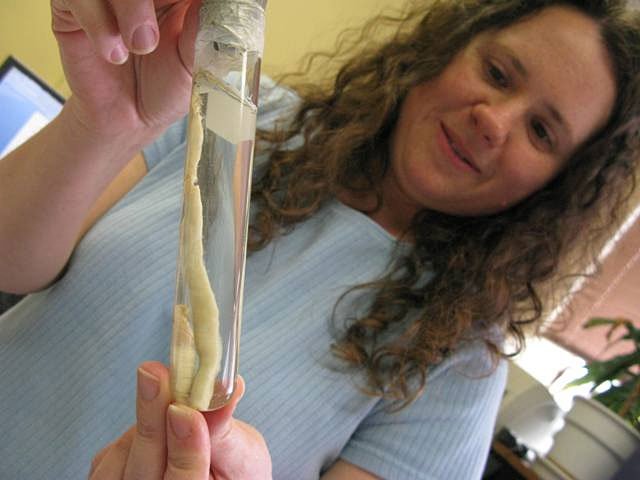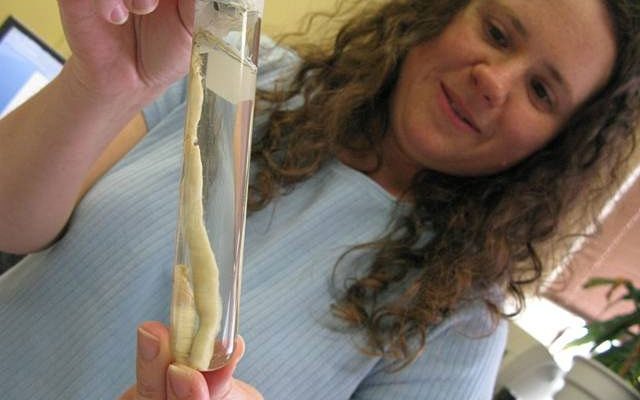
Using field cameras to document these earthworms is a game changer. It allows scientists to observe their natural behaviors without disturbing their habitat. The cameras can be set up in various locations, providing a clear view of how these worms interact with their environment. Think of it as peeking into someone’s living room without them knowing you’re there. This technique can reveal a lot about their habits and help protect them for future generations.
Why Study the Giant Palouse Earthworm?
You might be wondering why anybody would spend time studying something that lives underground. Well, the Giant Palouse Earthworm isn’t just a big worm; it’s an indicator of a healthy ecosystem. They play a crucial role in soil aeration and nutrient cycling, which benefits plants and other organisms. Understanding their behavior can give us insights into the health of the Palouse region’s ecosystem.
Historically, this earthworm was abundant, but habitat destruction and agricultural practices have diminished its population. By documenting its behavior, researchers aim to learn what it needs to thrive. It’s like piecing together a puzzle where each observation helps fill in the blanks about their lifestyles and requirements.
Imagine if scientists could discover that these earthworms prefer certain soil types or temperatures. That information could be vital in efforts to conserve or restore their populations, making their study not just interesting, but essential for environmental protection.
The Role of Field Cameras in Research
Now, let’s dive into how field cameras come into play. Traditional methods of studying worms often involve digging them up or creating disturbances in their habitats. This can alter their behavior and skew the results. Field cameras eliminate that problem. They’re set up in strategic locations, capturing footage of the worms in their natural habitat without interrupting their activities.
Field cameras, like the Bushnell Trail Camera, are specifically designed for wildlife monitoring. They’re equipped with motion sensors and infrared technology, allowing them to take pictures or video at all hours, day or night. The best part? They can be left in the field for long periods, collecting data over time. Think of it as a reality show focused on earthworms, giving viewers a glimpse into their daily lives.
One of the challenges researchers face is ensuring the cameras are positioned correctly. Too high up, and they might miss the worms; too low, and they might capture too much dirt. It takes careful planning and some trial and error, but the results can be stunning and enlightening.
Setting Up the Cameras
Setting up field cameras to document the behavior of the Giant Palouse Earthworm isn’t as simple as plopping a camera down and waiting. It requires a bit of strategy. Here’s how researchers typically go about it:
- Choose the Right Location: Researchers identify spots where earthworm activity is likely to occur. Areas with moist soil, rich vegetation, and limited disturbances are prime real estate.
- Adjust the Camera Angle: The cameras need to be angled just right. A common method is to set the camera slightly above ground level, pointing downward to catch any activity without being intrusive.
- Test the Equipment: Before leaving the camera for an extended period, researchers do a test run to make sure it captures the desired footage. Adjustments are often necessary, and this part can be a bit tedious.
- Reviewing the Footage: After weeks or months of patiently waiting, it’s time to check the footage. This is like opening a treasure chest of insights. Researchers sift through hours of video looking for the elusive earthworms.
You can see how meticulous this process can be—each step is important for gathering accurate data on the worms’ behaviors and interactions.
Monitoring Behavior and Interactions
Once those cameras are rolling, researchers can finally start seeing how these giant worms behave in their natural habitats. The footage doesn’t just show the worms slithering around; it reveals a whole world of interactions and activities.
From how they navigate through the soil to their feeding habits, these observations can shed light on their ecological role. For example, researchers learned that the Giant Palouse Earthworm tends to aerate the soil during certain times of the day, which helps maintain the health of the ecosystem. It’s like discovering a hidden talent in someone—what seems ordinary can actually have a big impact!
Moreover, the video footage also uncovers how these earthworms respond to environmental changes, such as temperature shifts or moisture levels. Understanding these responses can inform conservation efforts and help predict how climate change may affect them in the future.
Challenges of Using Field Cameras
While field cameras provide invaluable insights, they are not without their challenges. Nature can be unpredictable, and cameras can sometimes capture unintended footage. Here are some common hurdles researchers face:
- Wildlife Interference: Other animals may wander into the camera’s view, sometimes stealing the spotlight from the main subject. Think of a curious raccoon or deer photobombing a shot!
- Camera Malfunction: Batteries can die, or memory cards can fill up before researchers return to check on them. Regular checks can help mitigate this risk, but it takes time and effort.
- Data Overload: After weeks of recording, researchers can end up with enormous amounts of footage to sift through. This requires dedication and sometimes a team of people just to analyze the best clips.
Despite these challenges, the rewards of using field cameras far outweigh the downsides. They provide a unique glimpse into the lives of these fascinating creatures that would be difficult to achieve through other means.
The Future of Earthworm Research
Looking ahead, the use of field cameras in studying the Giant Palouse Earthworm opens up exciting possibilities for future research. Advances in technology could lead to even better camera features, like improved night vision or enhanced motion detection, allowing researchers to capture even more detailed behavior.
Moreover, as awareness of the Giant Palouse Earthworm’s plight grows, technology could play a pivotal role in conservation efforts. Imagine using real-time data from these cameras to develop strategies for habitat restoration or to create protected areas. It’s all about finding ways to utilize the information gathered to make a real impact.
Ultimately, documenting the behavior of the Giant Palouse Earthworm with field cameras is more than just a scientific endeavor. It’s a way to connect with nature, understand it better, and contribute to preserving an important part of our ecosystem.
In conclusion, whether you’re a budding biologist or just a curious nature lover, the journey of documenting these incredible earthworms is a reminder of how intricate and interconnected our ecosystems are. With each camera click, researchers are working to protect the Giant Palouse Earthworm and ensure its future. And who knows? Maybe the next groundbreaking discovery about these incredible creatures is just waiting to be captured on film.

